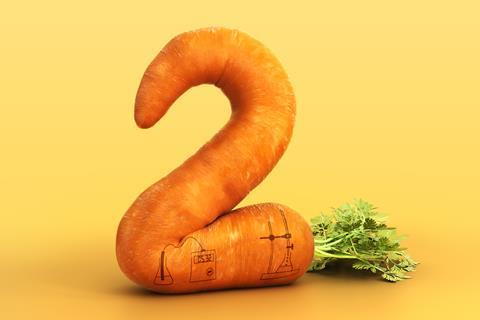Resources and activities to link UN sustainable development goal 2 to your practical lessons on rates of reaction and the use of fertilisers

To fully appreciate the challenges Goal 2 presents, both now and in the future, learners need a good understanding of the existing methods of providing food for the planet and the issues that will present themselves in the future.

This article is part of the Sustainability in chemistry series, developed to help you integrate the UN’s sustainable development goals into your teaching of chemistry. It supports Goal 2: end hunger, achieve food security and improved nutrition, and promote sustainable agriculture.
At 11–14, students learn that nutrients are required for plant growth. At 14–16, they learn about the industrial conditions of the Haber process and the part it played in feeding the world; they name the core elements (N, P and K) present in fertilisers and identify the problems of eutrophication. At 16–18, learners begin to look at the chemical processes behind the production of fertilisers in more depth and start to appreciate the part that chemists play in increasing crop yields whilst ensuring the sustainability of agriculture. They also develop the investigative practical skills required for further study of science at university.
Put it in context
An essential part of science teaching is giving learners the opportunity to develop practical skills and understand the scientific discipline that links to the production of meaningful and valid data. This is vital if we are to produce skilled scientists who can complete research that enables humankind to have a sustainable future.
An understanding of the chemical processes involved in the production of fertilisers is fundamental to the ability to provide enough food to feed billions of people on a future Earth.
Measuring the sustainability of any chemical process is complex so learners should be encouraged to look at it from a chemical point of view. Chemists have some simple mathematical concepts to hand, such as atom economy and yield, but assessing sustainability must go right back to source, looking at the holistic process starting with the production of the raw materials. There is still scientific debate about the concept that a 100% conversion to organic agriculture could feed the world, because although there are advantages with increased soil health and reduced pesticide use, organic systems produce lower yields and thus require a larger land area to produce the same output.
Download this
A practical investigation, for age range 16–18
Use the Rate of hydrolysis of urea practical investigation, part of our Challenging plants: fertilisers practicals together with this student worksheet and teacher notes. They help you assess practical skills and add green chemistry questions on fertilisers and sustainability.
Download the student worksheet and teacher notes to suport the practical from the Education in Chemistry website: rsc.li/3D6mgjs
Put it into practice
Both Brexit and Covid-19 have increased public awareness of food security. Get your 14–18 learners thinking about the processes involved in a sustainable supply of future food with a discussion using the downloadable resources (above). Students can compare the sustainability of inorganic and organic fertilisers and apply their knowledge to solve real problems.
16–18 students in England, Scotland and Ireland can tackle the initial rate of hydrolysis of urea experiment – practising skills that are assessed in advanced level chemistry courses. They’ll use mathematical models to identify the rate equation, order and mechanism based on their experimental data. Download the resources above to support and assess their practical skills and add context to the experiment.
The ‘Challenging plants’ series is a smorgasbord of resources for all secondary ages, with food for thought for the 14–16 learner about the manufacture of fertilisers and soil structure; fertiliser design for the 16–18 learner including transition metal chemistry and titration analysis; soil science practicals on distribution coefficients and a link to organic synthesis.
There is a myriad of resources available to enable the more curious 16–18 learner to develop a critical analysis of the challenges around Goal 2. Tim Benton’s lecture on the challenges of global food security and the food security challenge are excellent starting points.
It’s worth taking time to explore the terminology when using these resources, especially the use of the word ‘sustainability’, as taking a holistic view of any processes being scrutinised is essential. Even ‘natural’ processes can contribute to climate change, for example if animal manure is used then the methane released by that animal should be included.
Get more resources
- Our Challenging plants series includes many resources and practical investigations on plant science, soil science and fertilisers.
- Use our lesson plan on ‘Healthy’ fats and obesity with your 16–18 learners, which includes an experiment comparing saturated and unsaturated fats.
- Link to careers with this job profile of a research and development team leader reducing food waste through better packaging and this video profile of a head of research and sustainability, who makes a sustainable fabric from pineapple leaves!
- Test and observe whether everyday foodstuffs contain starch using this microscale experiment, which only takes 10 minutes!
- Vitamins and the chemistry behind them provides your 11–16 learners with scientific and historical contexts and includes practical experiments, lesson plans and a DART (Directed Activity Related to Text).
Chemists have a vital part to play in the future, to end hunger, achieve food security and improved nutrition and promote sustainable agriculture, as described by Goal 2. The resources highlighted here will give students the opportunity to realise this.
Check out the rest of the Sustainability in chemistry series.









No comments yet